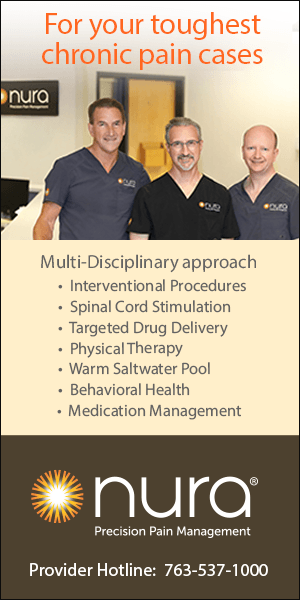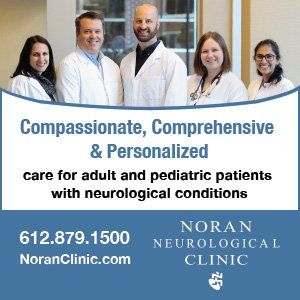steoporosis is a skeletal disorder characterized by low bone mineral density, poor bone quality and decreased bone strength, which is likely to lead to bone fractures in older individuals. Worldwide, 50% of older women and 25% of older men are at risk of bone breaks due to osteoporosis, and studies indicate that one in three women over 50 and one in five men will experience fractures. In the U.S. the disease is pervasive and affects millions, nearly 80% of whom are women. Of the roughly 65 million Medicare beneficiaries, an estimated 2.3 million suffer osteoporotic fractures.
Pain Management
Prevention and Treatment of Osteoporosis
Beyond the basics
BY Erin Bettendorf, MD, and Andrew Cozadd, PA-C
The debilitating effects of osteoporosis can presage a downward spiral in mental and physical health and create a heavy burden for families and the entire health care system. Women with osteoporosis require more hospital stays and generate more health care costs than heart attack, stroke and breast cancer patients combined. Those experiencing a bone break due to osteoporosis are statistically much more susceptible to future breaks. With serious breaks such as a hip or vertebrae fractures, the injury also carries significant mortality risk: 20% to 25% ultimately die within a year.
Though risk factors are well defined and testing reasonably quick and noninvasive, osteoporosis cases are often identified only after a break occurs. And follow-up is sometimes lacking. In a recent study of 3,000 patients who had suffered compression fractures, nearly 40% went on to break another bone within two years. But in that time, only 2% had received a bone density scan.
Breaks are often not recognized as a sign of osteoporosis. Lately it seems that pickleball is one of the most dangerous activities, with numerous injuries being reported. Say a player, relatively fit and active, presents with a wrist fracture. Most providers will treat the injury and send the patient home. Understandably, because these patients don’t necessarily fall into the high-risk category: they tend to be younger, more active, and have quicker reflexes to catch their fall, which can explain the wrist injury.
Osteoporosis is typically considered an issue of the old and infirm. There’s a significant gap in diagnosis and treatment, and it’s up to all of us, specialists and primary care clinicians alike, to close that gap. Understanding the risk factors, the importance of early detection and diet and lifestyle modifications is crucial for effectively managing and preventing this debilitating disease.
Osteoporosis is a significant public health concern.
The Process of Osteoporosis
Bone is living tissue, constantly remodeling itself based on metabolic demand and to repair the micro damage of daily wear and tear. Remodeling involves osteoclasts (bone breakdown cells) dissolving some of the material. Then the osteoblasts (bone building cells) fill in that space. Usually, the rate of bone breakdown and bone building is fairly equivalent. But after a 50, and particularly after menopause for women, breakdown starts to exceed building, resulting in a net loss of bone density.
What’s vexing about this disease is that there are no specific symptoms prior to a traumatic injury. Patients aren’t going to walk into the office and say their osteoporosis is flaring up and can we do something about it. So, it’s incumbent on providers, especially in primary care, to identify higher-risk patients and offer prevention, screening and treatment.
Risk Factors
A number of factors contribute to bone loss, including underlying conditions, certain medications, lifestyle and diet. Being aware of these risk factors can help in early identification and intervention. These include:
- Age is one of the most significant determinants of bone density. Bone remodeling becomes less efficient as we get older, leading to a gradual decrease in bone density.
- Gender differences in bone density are evident, with women much more likely to develop osteoporosis than men. Estrogen, critical to maintaining bone density, drops significantly after menopause. Men also lose bone density with age, especially if they have low testosterone.
- Genetic factors influence peak bone mass, rate of bone loss and likelihood of developing bone-related issues. Specific gene mutations related to bone growth and metabolism can predispose individuals to weaker bones. And individuals with smaller body sizes are more likely to suffer from osteoporosis as they have less bone mass to draw upon.
- Lifestyle choices can significantly impact bone health. A sedentary lifestyle characterized by a lack of weight-bearing exercise leads to bone loss. Smoking impairs the absorption of calcium necessary for bone health and disrupts hormone balance. Excessive alcohol consumption interferes with calcium and other nutrient absorption that’s essential for healthy bones. A poor diet, particularly one including highly processed food, is also a potent predictor of osteoporosis.
- Certain chronic medical conditions can adversely affect bone health. Rheumatoid arthritis, for example, is associated with systemic inflammation and the use of corticosteroids, both of which can accelerate bone loss. Endocrine disorders such as hyperthyroidism and diabetes can also negatively impact bone density and quality. Conditions such as celiac disease and inflammatory bowel disease that impair nutrient absorption can lead to deficiencies in calcium and vitamin D, critical for bone health.
- Long-term use of some medications can contribute to bone loss. Corticosteroids interfere with the bone remodeling process by decreasing bone formation and increasing bone resorption. Certain anticonvulsants, cancer chemotherapeutic agents, and proton pump inhibitors have also been linked to reduced bone density when used over extended periods.
- Screening and early detection. Early detection of osteoporosis is key to preventing fractures. A bone density scan (dual-energy X-ray absorptiometry or DEXA) is a simple but powerful tool for identifying those at risk before significant bone loss occurs. With each standard deviation decline in bone density, fracture risk approximately doubles. But that accounts for only about 50% of fracture risk, so it’s important to consider other useful tools such as the trabecular bone score, which is calculated from DEXA scan results, measuring heterogeneity of bone minerals in the lumbar spine. The more homogenous, the better the bone quality; the more heterogeneous, the worse.
Additional Concerns
It’s important not to rely too heavily on the DEXA scan. For instance, if a patient has diabetes or has been on steroids, you may find their bone density score doesn’t look that bad. Perhaps they’re in the moderate thinning or osteopenia category, but they may have significant deterioration of their bone microarchitecture. Sometimes these patients present with low-trauma compression fractures and other injuries requiring treatment, whereas if you just looked at their bone density scan, they might not appear to be at risk.
Fracture risk assessment calculators such as FRAX® measure the likelihood of a patient’s suffering an osteoporotic fracture in the next 10 years.
The U.S. Preventive Services Task Force provides guidelines on who should undergo bone density screening absent symptom or injury. Women 65 and older are indicated for routine screening, as they are at higher risk due to postmenopausal bone loss. Postmenopausal women under 65 should also be screened if they have risk factors such as a family history of osteoporosis, low body weight or previous fractures.
Men 70 and older also face significant risks as they age, warranting routine screening. Those 50 to 69 should consider screening if they have risk factors including chronic diseases, prolonged use of medications affecting bone health, previous fractures or family history of osteoporosis.
Prevention and Management of Osteoporosis
Preventing osteoporosis and managing its progression involve a multifaceted approach, including lifestyle modifications, dietary considerations and medical treatments. Some of these include:
- Lifestyle changes such as adopting a healthy lifestyle are imperative for maintaining bone health. Regular physical activity, particularly weight-bearing and muscle-strengthening exercises, helps build and maintain bone density. Activities such as walking, jogging, climbing stairs, lifting weights and yoga are beneficial. Avoiding smoking and limiting alcohol intake are also crucial steps.
- Nutritional considerations such as ensuring adequate intake of calcium and vitamin D are essential. Calcium is the primary mineral found in bones, and vitamin D helps the body absorb calcium efficiently. Foods rich in calcium include dairy products, leafy green vegetables, nuts and fortified foods. Vitamin D can be obtained from sunlight exposure, fatty fish, fortified foods and supplements if necessary.
One of the challenging and painful consequences of osteoporosis is the vertebral compression fracture (VCF).
- Medical treatments. We have two levers we can pull if we want to influence a patient’s bone density; we can either slow the breakdown of bone, or speed up bone building. Bisphosphonates, such as alendronate and risedronate, inhibit bone resorption, thereby maintaining bone density and reducing the risk of fractures. Selective estrogen receptor modulators (SERMs), such as raloxifene, mimic the effects of estrogen on bone, helping preserve bone density in postmenopausal women. Hormone replacement therapy (HRT) can be effective in maintaining bone density in postmenopausal women, though it comes with potential risks. Denosumab, a monoclonal antibody medication, helps reduce bone resorption and is administered via injection every six months. Teriparatide and abaloparatide (and romosozumab) are anabolic agents that stimulate bone formation and are used in severe cases of osteoporosis.
Vertebral Compression Fractures
One of the challenging and painful consequences of osteoporosis is the vertebral compression fracture (VCF). Over 700,000 occur in the U.S. each year, and two-thirds go undiagnosed, with even fewer treated. Annually, 150,000 people are hospitalized due to pain and medical management of VCFs. An estimated 75,00 to 100,000 more cancer-induced VCFs occur annually.
Potential sequelae of VCFs include prominent thoracic kyphosis, loss of height, pressure sores, decreased lung capacity and chronic pain. VCFs may worsen over time and lead to a downward spiral in a patient’s health. Patients can no longer be independent, they’re more sedentary, and mood and sleep are negatively affected. The more significant the pain or sequelae of the VCF, the more appropriate the patient is for interventional treatment over conservative approaches.
One of the difficulties in assessing this impairing condition is that patients can present with mild back pain or pain indistinguishable from more standard causes. The osteoporosis risk factors outlined above can, however, help distinguish such fractures.
Another challenge for physicians is that the associated pain from a VCF can range from mild to severe and is not always a direct result of a traumatic event. In some cases, minimal trauma such as coughing can result in a VCF, and sometimes there’s no clear cause. Because of this, a high index of suspicion for VCF is important in patients with acute back pain who also have risk factors for osteoporosis.
To identify a VCF, the patient’s spine is examined, looking for localized pain associated with midline palpation or percussion. This may indicate a vertebral compression fracture. As far as diagnostic tests are concerned, a lateral spinal x-ray is an appropriate place to begin. Thoracic and/or lumbar MRIs can provide more detailed information, which is helpful for treatment and procedural planning. Interestingly, many patients are asymptomatic and are found to have a VCF incidentally on other imaging modalities.
Non-Interventional Treatment Options
Managing VCF-associated pain with medication is a common treatment for patients. Especially in an older patient, however, caution is necessary as many pain medications can increase the risk of a fall and subsequent new fracture. Immobilizing the vertebrae with bracing can be done, but it can be challenging for patients as it means several weeks in an uncomfortable and cumbersome brace. For some patients, a VCF can heal with time, the pain abating through the healing process.
Interventional Treatment Options
For patients with significant back pain, worsening functioning or lack of improvement with conservative treatments, there are two main percutaneous interventional treatment options to manage a VCF: vertebroplasty and kyphoplasty. With vertebroplasty, a cannula is placed into the vertebral body and a cement is injected at a relatively high pressure to stabilize the fracture. There’s some risk that the cement extravasates, or moves into areas outside of the vertebral body, such as the spinal canal. There’s also risk of vascular uptake and stroke from micro emboli as a result of the cement’s being pushed into vessels at high pressure. It’s important to note that this procedure does not restore the height of the vertebral body.
Kyphoplasty is similar to vertebroplasty, but with the important addition of a balloon used to create a space within the vertebral body prior to cement injection. Because the balloon expands the internal space within the vertebral body, a kyphoplasty may help restore some of that vertebral body height loss as it lifts and separates the end plates. The cement is injected at a lower pressure because of the cavity created with the balloon, which lessens the risks and complications compared to a vertebroplasty.
Vertebroplasty is a less expensive procedure, but studies have questioned its effectiveness. Kyphoplasty has lower rates of complications and better effectiveness in pain abatement but is not appropriate in patients with asymptomatic or only mildly painful VCFs.
It is critical to diagnose and treat VCFs as early as possible in order to help prevent further deformity and reduce long-term consequences of increased chronic pain, reduced daily functioning, and decreased quality of life.
Conclusion
Osteoporosis is a significant public health concern, particularly as the population ages. By understanding the risk factors, adhering to screening guidelines and utilizing effective diagnostic criteria, providers and patients can work together to manage and prevent it. Emphasizing lifestyle changes, proper nutrition and appropriate treatments can significantly reduce the impact of osteoporosis and improve quality of life for those affected. Ongoing research and advancements in the field hold promise for more effective ways to combat osteoporosis in the future, as well as to manage and treat complications such as vertebral compression fractures.
Erin Bettendorf, MD, provides interventional and pharmacological pain management through Nura Pain Management.
Andrew Cozadd, PA-C, runs an osteoporosis clinic with Tria Orthopedics.
MORE STORIES IN THIS ISSUE
cover story one
Health Care at the Crossroads: Securing the future of patient care
By Lisa Schweiger, MD, and Nick VanOsdel, MD
cover story two
Talking to Adolescent Patients: A new toolkit to improve communication



















